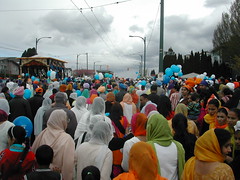Digital cameras in the period 2000-2020 have a curious rise-and-fall history. The period 2000-2001 was a period of gadgets, Palmtops were doing brisk business, Camcorders and digital cameras were also selling well. Consumer and prosumer digital cameras were being released, having around 5MP. Previous to this timeframe there existed some Sony Mavica cameras but the quality of these 5MP ones was quite improved. Several cameras with large sensors (1/1.8″) were available then. Large sensor mostly means improved photo quality. Since DSLRs are out of scope for this post, we will consider 1/1.8″ sensor as large. Large sensor is a big advantage in consumer cameras.
As we move to the period 2008-2009 and beyond, the megapixels were on the rise. Now, 12-15MPs were easily available. Still companies were using large sensors to provide quality pictures. Higher zooms were available now, image stabilization had become the norm.
In the 2010-2012 period though, the sensor sizes became smaller and zooms became higher. This reduced photo quality. Why would companies want to do this? I can only guess that higher zooms would give the cameras a USP and allow them to be sold for a higher margin. At the same time, smaller sensor sizes would allow even more margins. Hoping the customer would not notice.
In the 2016-2017 period, smartphones started taking the lead in consumer photography and camera sales started declining. One important factor that added to this was the lack of innovation in digicams. Sales of consumer DSLRs such as the Nikon D5100 also started declining. As early as 2010 Nokia was talked about as the world’s largest seller of digital cameras, but the quality of photos from mobile phone cameras was poor. In 2010 – Nokia sold over 435 million camera phones worldwide, giving them over a 30% market share of all digital cameras sold globally that year. However the picture had changed by 2015. Nokia’s phone business had been sold off to Microsoft, and its worldwide phone sales for the full year were less than 30 million units. From leading the digital camera market in 2010 with over 30% share, Nokia had vanished from the top vendor rankings within just half a decade. iPhone 6 had been launched with a not-too-bad camera (though with a small sensor again). Most cellphones still had a small sensor to save cost (and because of space constraints in a phone), so the quality was still questionable in spite of technological improvements. No one was thinking about quality, only margins.
The above graph shows 2010 as year 1 and so on.
Around 2009-2013 several markets, esp in Delhi NCR were dedicated to cameras, lenses, repairs etc. By 2023 most of these had either closed or started catering only to professional gear.
In 2018, most mobile phones started shipping with two cameras on the back, which soon increased to 3 or 4 cameras. This, along with AI improvements allowed ‘background blur’ without using expensive lenses, in a never-before way. It dealt a serious blow to the digicam market. Overall, 2018 saw a significant improvement in mobile phone camera quality, both because of use of AI and multiple cameras. A battle was on among mobile companies to improve photo quality without increasing sensor size. Some of the more expensive phones did start getting larger sensors though of late.
As of 2023, only 1 – 2 models for new consumer digital cameras or consumer DSLRs were available in India, that too with difficulty. The consumers are at a loss: those who cannot afford a professional DSLR have to make do with low quality smartphone photos (even iPhone photo quality at best can be rated ‘poor’ compared to what a decent camera of today could do, if manufactured**). We are buying mobile phones that are being sold at prices several times the manufacturing cost. Yet, giving us low quality because the customer is not smart.
My suggestion to the smart buyer: rather than buying an expensive iPhone, buy a normal phone (costing around USD 300) and use the rest of the money to buy a mirrorless DSLR. You have nothing to loose but your mobility!
** some of the latest iPhone models do have larger sensors to improve quality.
Crux of the story: market for digital cameras got killed because of the greed of camera companies.





